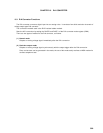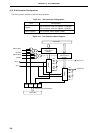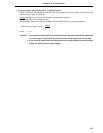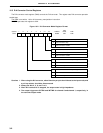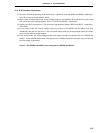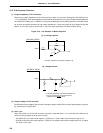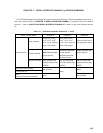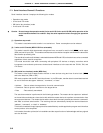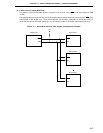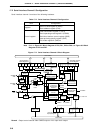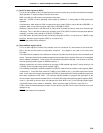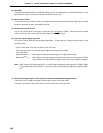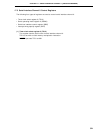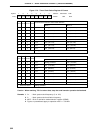
CHAPTER 17 SERIAL INTERFACE CHANNEL 0 (
µ
PD78078 SUBSERIES)
316
17.1 Serial Interface Channel 0 Functions
Serial interface channel 0 employs the following four modes.
• Operation stop mode
• 3-wire serial I/O mode
• SBI (serial bus interface) mode
• 2-wire serial I/O mode
Caution Do not change the operation mode (3-wire serial I/O/2-wire serial I/O/SBI) while operation of the
serial interface channel 0 is enabled. Stop the serial operation before changing the operation
mode.
(1) Operation stop mode
This mode is used when serial transfer is not carried out. Power consumption can be reduced.
(2) 3-wire serial I/O mode (MSB-/LSB-first selectable)
This mode is used for 8-bit data transfer using three lines, one each for serial clock (SCK0), serial output
(SO0) and serial input (SI0). This enables simultaneous transmission/reception and therefore reduces the
data transfer processing time.
The start bit of transferred 8-bit data is switchable between MSB and LSB, so that devices can be connected
regardless of their start bit recognition.
This mode should be used when connecting with peripheral I/O devices or display controllers which
incorporate a conventional synchronous clocked serial interface as is the case with the 75X/XL, 78K, and
17K Series.
(3) SBI (serial bus interface) mode (MSB-first)
This mode is used for 8-bit data transfer with two or more devices using two lines of serial clock (SCK0)
and serial data bus (SB0 or SB1).
SBI mode complies with the NEC serial bus format. In the SBI mode, transfer data is transmitted/received
as one of the three data types: “address”, “command”, or “data”.
• Address : Data to select the target device for serial communication
• Command : Data to give an instruction to the target device
• Data : Data actually transmitted
The actual transmission is performed in the following procedure: The master device outputs an “address”
on the serial bus and selects a slave device with which the master device is to perform communication from
among several devices. The master device and the slave device mutually transmit and receive “commands”
and “data” to achieve serial transfer. The receiving side can automatically identify the received data as an
“address”, “command”, or “data” in“ hardware.
This function enables the input/output ports to be used effectively and the application program serial interface
control portions to be simplified.
In this mode, the wake-up function for handshake and the output function of acknowledge and busy signals
can also be used.




